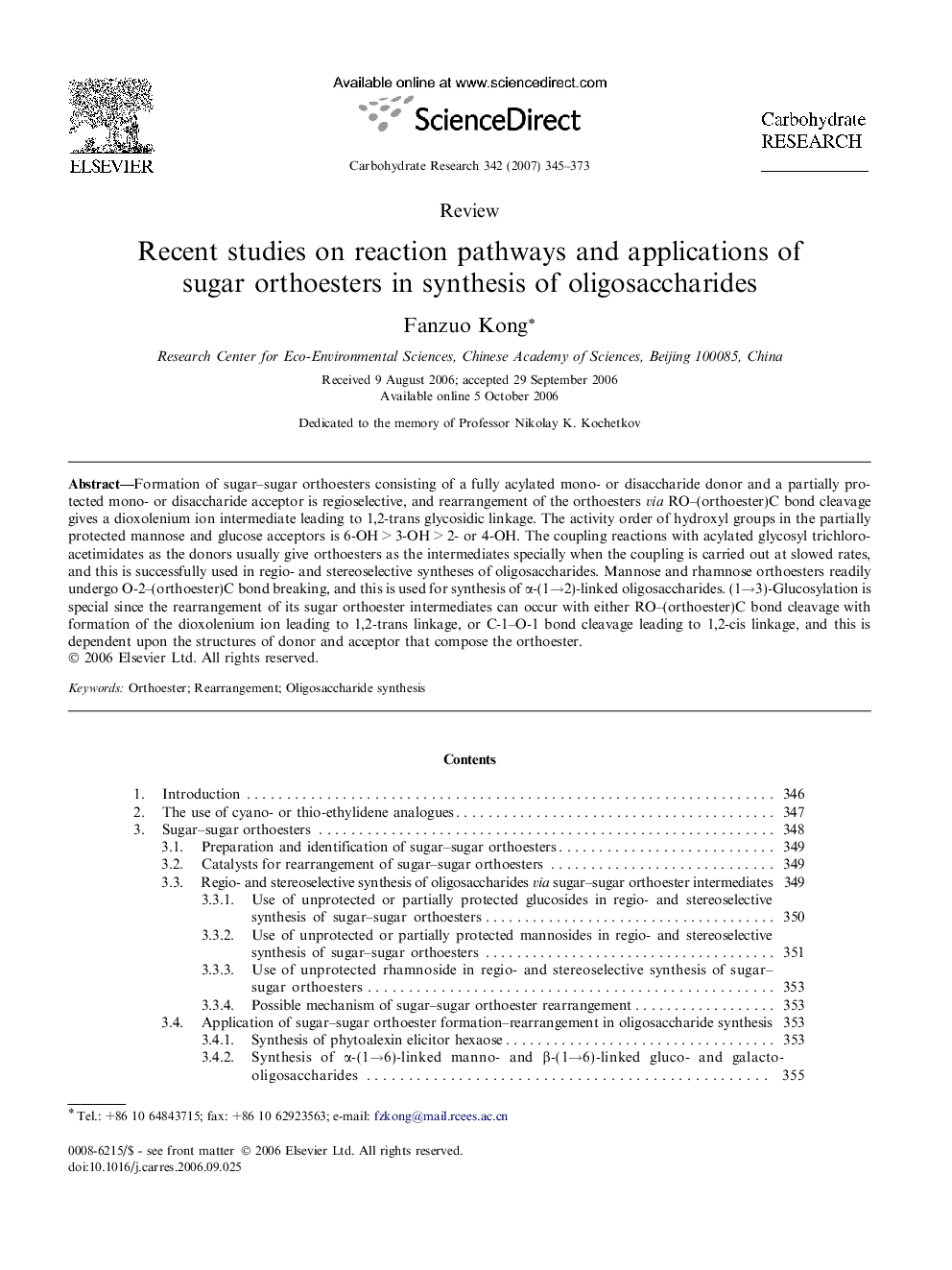| Article ID | Journal | Published Year | Pages | File Type |
|---|---|---|---|---|
| 1385471 | Carbohydrate Research | 2007 | 29 Pages |
Formation of sugar–sugar orthoesters consisting of a fully acylated mono- or disaccharide donor and a partially protected mono- or disaccharide acceptor is regioselective, and rearrangement of the orthoesters via RO–(orthoester)C bond cleavage gives a dioxolenium ion intermediate leading to 1,2-trans glycosidic linkage. The activity order of hydroxyl groups in the partially protected mannose and glucose acceptors is 6-OH > 3-OH > 2- or 4-OH. The coupling reactions with acylated glycosyl trichloroacetimidates as the donors usually give orthoesters as the intermediates specially when the coupling is carried out at slowed rates, and this is successfully used in regio- and stereoselective syntheses of oligosaccharides. Mannose and rhamnose orthoesters readily undergo O-2–(orthoester)C bond breaking, and this is used for synthesis of α-(1→2)-linked oligosaccharides. (1→3)-Glucosylation is special since the rearrangement of its sugar orthoester intermediates can occur with either RO–(orthoester)C bond cleavage with formation of the dioxolenium ion leading to 1,2-trans linkage, or C-1–O-1 bond cleavage leading to 1,2-cis linkage, and this is dependent upon the structures of donor and acceptor that compose the orthoester.
Graphical abstractFigure optionsDownload full-size imageDownload as PowerPoint slide
